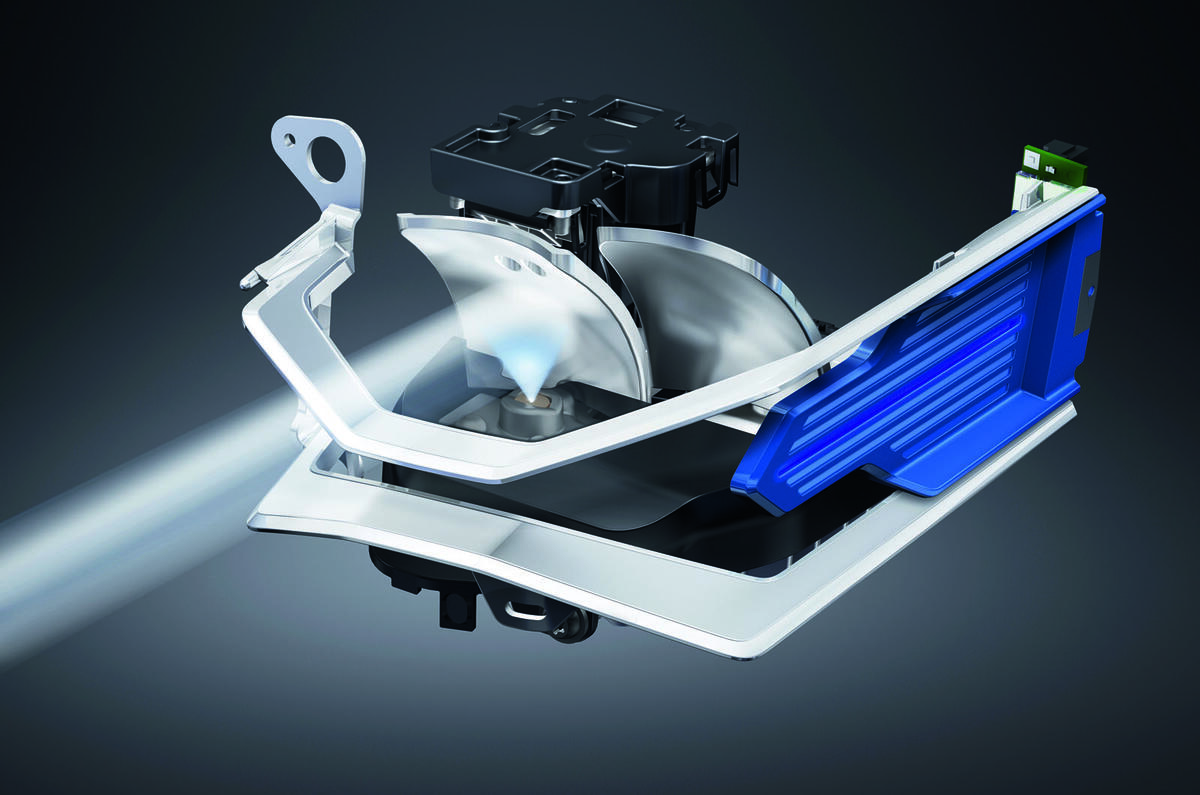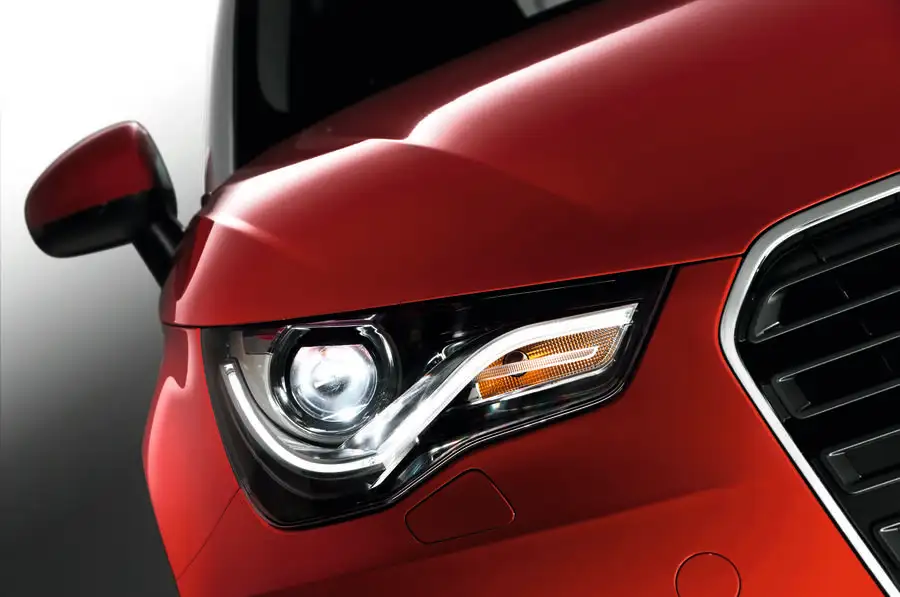It’s an often overlooked fact that the headlights you turn on at night to read the road ahead are directly linked to what comes out of the tailpipe or the range of an EV. Why? If all the lighting on a car, including indicators, is by LED, the power consumption saving compared with using old-school halogen is 60%, and cutting that reduces fuel consumption and emissions.
The colour temperature (measured in kelvin and literally the colour of the light) is much whiter than a halogen bulb, which is yellow by comparison, giving superior forward vision. Audi quotes 5500 kelvin for its LED headlights, which, it says, is close to daylight.
LEDs – light-emitting diodes – are classified as semi-conductors, so named because they are more conductive than something like glass but less than a metal, like copper. Diodes were originally developed as electronic components for electronic circuitry and act like a valve, allowing current to flow in one direction but not the other. If certain materials are added to the semi-conductor in a process called ‘doping’, the material can glow (fluoresce) when the diode is live, giving rise to the LED we all know and love. The type of LED used in headlights emits a mixture of red, green and blue light, which the eye sees as white.
Apart from the free lunch scenario – lots of light for not much energy – LEDs have other benefits, too, such as the potential to shape the beam to light only specific areas of the road. This trickery, known as LED matrix lighting, is made possible by using an array of LEDs in a headlight arranged in separate ‘pockets’ or ‘tunnels.’ Selective use of the LEDs can alter the shape of the beam so that the light pattern can be cut off vertically and horizontally. For example, instead of a traditional dip beam, the road in front of the car on the nearside can remain illuminated further ahead, while that on the offside can be left in relative darkness to avoid blinding oncoming cars.




Join the debate
Peter Cavellini
Whoah there!
Bit too much info there, still, I’ll never read it again, a School day for me...!
Peter Cavellini.
Lovema75
Yes but...
As someone who does a lot of night driving (with perfectly fine halogens!) I'm constantly blinded by starship enterprise vehicles coming the other way, with artificially white dazzling arrays.
And what about the replacement cost of these things too? Another way to fleece the motorist.
Modern headlights, along with touch screens dashoards, do nothing to advance road safety or move car design on one bit.
289
@ Lovema75
Quite agree Lovema.....
I dont actually see this as a positive move ...not least due to cost of replacement (its not all about end of life, but also damage - when you return to your car in a car park and some kind sole has smashed one of your headlights and buggered off!), the cost of replacement is horrendous.
As stated before they are far too bright ....not needed within the national speed limit, (useful in competition), and there seems to be no Governmental control over the actual lumens emitted, rather than wattage.
Its not just headlights though..... Rear lights (brakelights) are way too bright. The fad for unusual designs are overtaking actual safety requirements......I notice a trend towards tiny thin strips for indicators which blink sequentially to indicate.......In bright sunlight and with brakelights on they are all but invisible. This is a case of form over function - otherwise known as stupid or even dangerous. Somebody needs to take control of the designers 'styling' ambitions.
Also noticed as a result of LED technology are the glaring traffic lights (particulerly bad at night in rain), and the latest LED's in emergency vehicles roof lights..... these are more likely to cause an accident on the way to an incident.
So, LED's not all they are cracked up to be then!
Squonk61
But at what cost?
The elephant in the room with LED - and HID Xenon - is the potential cost and complexity of replacement when they fail. The technology is great - but it has to sustainable too.
Granted their lifespan is longer than a tradional bulb but HID bulbs DO go - and due to the high voltages involved in ballast units, manufacturers/dealers love to refer owners to the dealer to change them. I think VW charge about £200 for a headlight bulb for a Golf 7. Half of that is the cost of the bulb (twice normal retail, naturally) the rest for the labour - and boy are they a pain to get to. You have to loosen off trhe fron bumber for goddness sake...
Designing out sevicability under the assumption of long term service will bite - but it will be the unlucky 2nd or 3rd owners that will pay the price.
xxxx
Economy gain?
Agreed Lovema75.
And as to Economy there could have been a separte article on how much these add to the initial production cost, and, god forbid if need to replace a headlight (Bi_xenon +LED ). Someone at work replaced ONE last year, £850 for a basic'ish Alfa + £150 fitting = £1,000!!
typos1 - Just can’t respect opinion
GaryW
Have to disagree with Lovema75
Yes, LED headlights are expensive to replace, but it's hard to imagine how anyone can say they do nothing to advance road safety...unless they've never driven a car that has them. Being able to see where you're going, and see people/wildlife at the side of the road, is pretty fundamental to being able to drive safely at night. LEDs are massively superior to other kinds of headlight, especially on dipped beam. Tungsten and halogen were useless, HID tends to be OK on full beam but useless on dipped beam, LED is great all the time especially if the headlights are adaptive.
si73
They maybe great for you
Jimbbobw1977
I have LED headlights in my
kronospoker.com
Kronospoker Situs Judi Online
Kronospoker Situs Judi Online, IDN Poker, IDN Poker Mobile, Agen Poker Terpercaya Indonesia untuk permainan Poker Online, Domino Qiu Qiu, Ceme Keliling, Capsa Susun dan Super10
Poker Online | Situs Judi Online | Daftar IDN Poker | CemeQQ
Add your comment